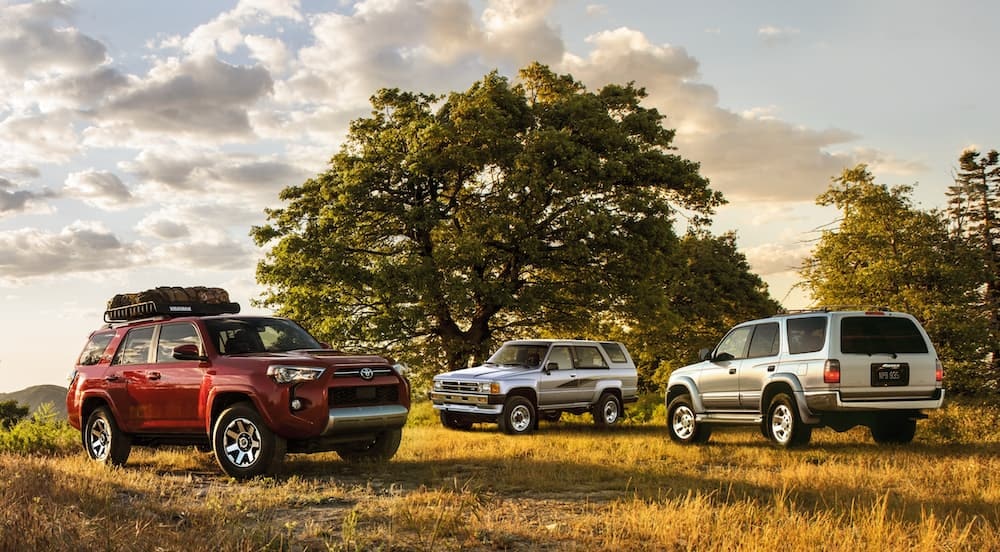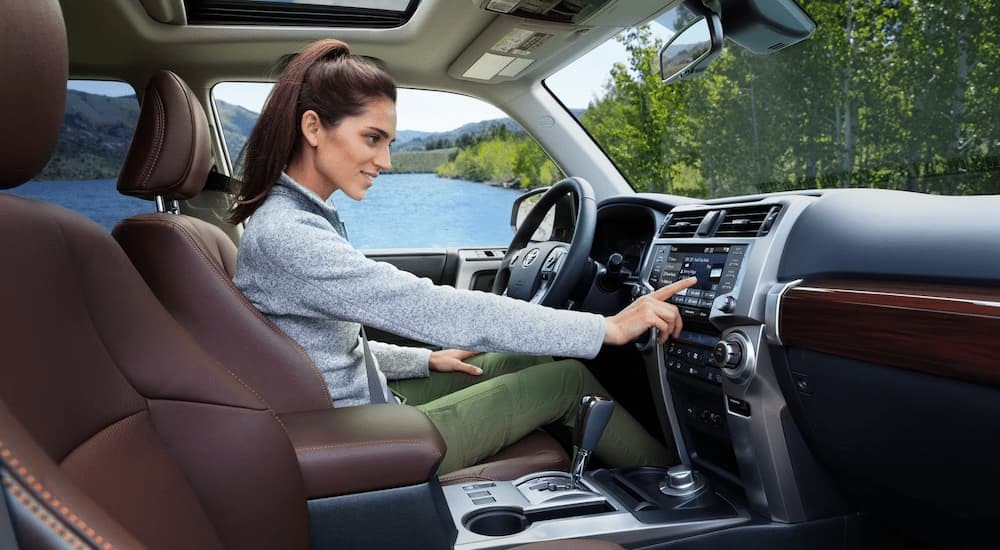
Four Decades of Off-Roading Excellence: The Toyota 4Runner
Off-roading is much more than just a hobby to those who engage in adventures on the road less traveled, far away from the confines of civilization. For drivers in Chesterfield, New Hampshire, there are multiple locations where off-roading can be done in the surrounding areas. Obtaining the correct type of vehicle to facilitate journeys such as these is as easy as visiting Faith’s Toyota. Why? Because the Faith’s Automotive team are proud purveyors of the off-roading excellence that comes in the form of the Toyota 4Runner. For over four decades, the 4Runner has exemplified true greatness and has allowed many drivers the chance to embrace a life of adventure.
If you’re ready for a life of adventure that takes place where the pavement ends, look no further than the inventory at Faith’s Toyota. As your local Toyota dealer near Chesterfield, Faith’s Toyota carries the best of what the brand offers. Today, we turn back the pages of history and look at the story of the Toyota 4Runner and how it became the symbol of off-roading that we all know and love.
1984-1989: The Birth of a New Chapter in Off-Roading
The saga of the Toyota 4Runner began in 1984. With the world of off-roading SUVs almost entirely dominated by Ford and Chevy, Toyota offered an option to facilitate travel off the pavement and simultaneously provide ideal performance with a scaled-down powertrain. In many ways, Toyota was far ahead of the rest of the industry, which was still relying on big eight-cylinder engines. The 4Runner did it with a 2.4L four-cylinder engine.
The modern 4Runner continues to rely on more efficient engine options, including a new hybrid powertrain that was recently introduced for the latest redesign. It’s for this reason that Chesterfield drivers can benefit from the 4Runner. Its design and scaled-down engine allow it to do more with less. This is a pivotal economic adventure when exploring the backwoods of New Hampshire and the surrounding states.
The design of the original 4Runner was a two-door SUV built upon the chassis of the Toyota Hilux pickup truck. When it hit the market, off-roaders loved being able to remove the rear canopy and turn the 4Runner into an instant dune buggy. While independent front suspensions have become commonplace in modern truck and SUV designs, the 4Runner was on the cutting edge when it adopted this design feature a few years after its introduction. This change in 1986 allowed drivers to go on and off the pavement at will and handle the city streets just as well as they could the wild frontier.

1990-1995: Change Is in the Air
If you lived in Chesterfield or anywhere else in New Hampshire during the 1990s, you might have noticed a slight change in the types of vehicles starting to be found on the road more often. At this time, the SUV began to become more popular, and in an area with its fair share of snow during the winter months, a vehicle with four-wheel drive became an absolute necessity.
Sales of the 4Runner in the US began to increase exponentially, with over 48,000 sold in 1990 alone after the model’s major redesign, the highest that the 4Runner had achieved up to that point. When the second generation left production in 1995, over 75,000 units were making their way to various driveways. In the years that followed, this number steadily increased and never wavered.
The second-generation 4Runner came in two-door and four-door variants and still retained the manual and automatic transmissions from the previous generation. However, the 4Runner became a four-door-exclusive SUV after 1993, a design it has maintained ever since. This generation also lost the removable roof in favor of a more conventional SUV body.
1996-2002: The SUV Boom Takes Effect
While the SUV had begun to become more prevalent in the early part of the 1990s, by the mid-1990s, this popularity had skyrocketed to unforeseen new heights. No longer was the SUV thought of as just a vehicle for adventurers. Instead, it was considered by many to be the ideal form of family-oriented transportation. The 4Runner received its second major redesign at the start of the 1996 model year; the vehicle became more aesthetically pleasing to the eye, thanks to the smoothing out of the box shape that had been prevalent in the previous generations.
There were notable changes to the powertrain, with the 4Runner now having two new engines for drivers to choose from: a 2.7L four-cylinder and a 3.4L V6. An 8.5-inch ground clearance made off-roading easier than in previous years, and the towing capacity now stood at 5,000 lbs. As the early 2000s began, the SUV craze was in full swing, and in an age where many domestic brands were still operating on the premise of “bigger is better,” Toyota would stick to its guns regarding the basic design of the 4Runner. Still, the brand would strive to perfect one of the most noteworthy vehicles.
2003-2009 : Adapting to New Changes
The 4Runner entered its third generation with the 2009 model year. Skid plates, hill assist control, and an adjustable air suspension made the 4Runner one of the few midsize SUVs ideal for daily transportation and off-roading. Around this time, there was also an increased focus on providing drivers with more standard safety features to help ensure their peace of mind during their travels. Vehicle stability control, electronic brake force distribution, and other tools were introduced on the 4Runner as part of Toyota’s Star Safety system.

2010-2024: Arriving at the Pinnacle of Perfection
The Toyota 4Runner began its fifth generation much as it had begun all of its others, perfectly formulated for various tasks, especially off-roading. The TRD Pro trim would be introduced a few years later in 2015, specifically formulated for drivers who preferred to spend their time off the road rather than on it. Skid plates and Bilstein shocks enhanced the off-roading experience for drivers who picked this option.
Abandoning the V8 that was offered for the fourth generation and retaining the 4.0L V6, with its 270 hp and the capacity to generate 278 lb-ft of torque, was the ideal performance that any driver could enjoy and take full advantage of. The driving experience was further enhanced with new technologies that could make any trip remarkable, such as compatibility with Apple and Android products, GPS-operated navigation, and a high-end stereo system from JBL for the discerning audiophile.
The 4Runner Is Ideal for Chesterfield
As the Toyota 4Runner gets ready to begin its sixth generation for the 2025 model year, big changes are coming, including a new hybrid powertrain option. Known as the i-FORCE MAX, this turbocharged 2.4L four-cylinder engine paired with an electric motor will produce 326 hp and an astounding 465 lb-ft of torque. This same powertrain has already been proven effective as part of the Toyota Tacoma. No matter where the 4Runner goes from here, one thing is certain: it will remain the ideal vehicle for those who favor the path less traveled.
If you live in Chesterfield, New Hampshire, there’s no denying that four-wheel drive is essential for battling the snowfall during the winter months and partaking in the occasional trip to explore the wild and untamed wilderness. Faith’s Toyota, a part of Faith’s Automotive, is your first stop on the way to an adventure unlike any other you’ve been on. The 4Runner is ideally suited to handle not only the rough and tumble world of off-roading but also the elements. As one of the world’s most sustainable and reliable brands, Toyota has always strived for greatness, and we always do our very best to follow its example.


